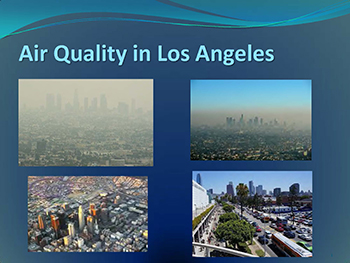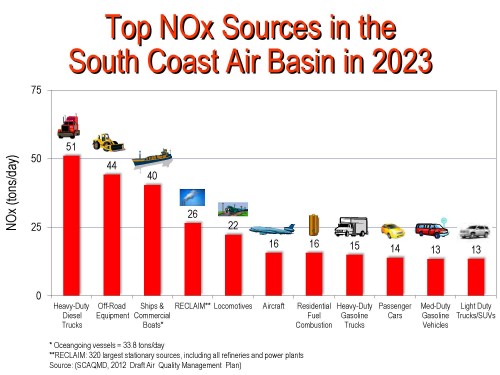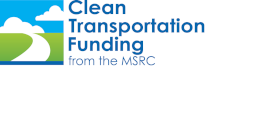 With “low-hanging fruit” and relatively inexpensive pollution reduction options drying up, the Board and Technical Advisory Committee (TAC) of the MSRC used its 2012 annual retreat to explore some bold new approaches for addressing clean transportation priorities during the next funding cycle.
With “low-hanging fruit” and relatively inexpensive pollution reduction options drying up, the Board and Technical Advisory Committee (TAC) of the MSRC used its 2012 annual retreat to explore some bold new approaches for addressing clean transportation priorities during the next funding cycle.
Some of the state and region’s most esteemed experts from both the public and private sectors joined the conversation to help inform the deliberations, including: Henry Hogo from the Air Quality Management District (AQMD); Earl Withycombe with the California Air Resources Board (CARB); Michael Ippoliti with CalSTART; and Tom Cackette, CARB Chief Deputy Executive Officer, delivering the luncheon keynote address. All of the experts delivered similar themes: tackling the region’s air pollution challenges will require more ambitious and creative thinking to get zero and near-zero emission transportation technologies deployed on a wide scale throughout the region to reduce the environmental and health impacts from internal combustion engine pollution.
 Tom Cackette provided a brief overview of the last 30 years of significant air quality improvements along with a sobering analysis of the challenges that remain. While the region’s air quality has improved dramatically, especially when one accounts for the remarkable population and vehicle growth, its air is still some of the dirtiest in the country. Furthermore, mobile sources are still one of the largest single sources of air pollution, accounting for: 90 percent of oxides of nitrogen (NOx) that contributes to the formation of smog, 30 percent of fine particulates (PM2.5) that harms health and 40 percent of greenhouse gas emissions that contribute to global warming. To meet federal air attainment rules and to meet California’s objective of reducing 80 percent of 1990 level CO2 pollution by 2050, pollution from mobile sources would have to be further reduced between 65 percent and 80 percent from current projections.
Tom Cackette provided a brief overview of the last 30 years of significant air quality improvements along with a sobering analysis of the challenges that remain. While the region’s air quality has improved dramatically, especially when one accounts for the remarkable population and vehicle growth, its air is still some of the dirtiest in the country. Furthermore, mobile sources are still one of the largest single sources of air pollution, accounting for: 90 percent of oxides of nitrogen (NOx) that contributes to the formation of smog, 30 percent of fine particulates (PM2.5) that harms health and 40 percent of greenhouse gas emissions that contribute to global warming. To meet federal air attainment rules and to meet California’s objective of reducing 80 percent of 1990 level CO2 pollution by 2050, pollution from mobile sources would have to be further reduced between 65 percent and 80 percent from current projections.
Cackette explained that while these are ambitious objectives, California is beginning to take steps toward solving the problem. These steps include new LEVIII (low emission vehicle) standards that will require all vehicles to be SULEV by 2025. Cackette added that achieving the goals by 2050 would require a nearly complete conversion to electric drive and having most vehicles powered by battery and fuel cells. Additionally, for large trucks it would require doubling fuel economy, tightening NOx standards for new truck engines by 75 percent, widespread use of biodiesel fuels, and the introduction of advanced engines such as hybrids and fuel cells as well as vastly more efficient goods movement – which is critical given that 40 percent of all imports come through the Los Angeles and Long Beach ports.
 Gretchen Hardison, MSRC-TAC Chair, shared that many of the current Clean Transportation Funding programs are demonstrating some effective approaches that can help the region solve its air pollution challenges. These include some of the most popular categories such as: Alternative Fuel School Bus Incentives; Event Center Transportation Programs (e.g Dodgers, Orange County Fair shuttles); Medium-Duty “Near Zero Emission” Vehicle Purchases; Bikeshare Demonstrations; Rideshare Awareness; and 511 Smartphone Applications. The Better World Group closed the meeting by presenting the key findings and recommendations from the six public stakeholder workshops held throughout Los Angeles, Orange, Riverside and San Bernardino counties. Funding alternative fuel vehicles, infrastructure and technology, as well as transportation demand management programs including bicycling programs and traffic signal synchronization were all strongly supported.
Gretchen Hardison, MSRC-TAC Chair, shared that many of the current Clean Transportation Funding programs are demonstrating some effective approaches that can help the region solve its air pollution challenges. These include some of the most popular categories such as: Alternative Fuel School Bus Incentives; Event Center Transportation Programs (e.g Dodgers, Orange County Fair shuttles); Medium-Duty “Near Zero Emission” Vehicle Purchases; Bikeshare Demonstrations; Rideshare Awareness; and 511 Smartphone Applications. The Better World Group closed the meeting by presenting the key findings and recommendations from the six public stakeholder workshops held throughout Los Angeles, Orange, Riverside and San Bernardino counties. Funding alternative fuel vehicles, infrastructure and technology, as well as transportation demand management programs including bicycling programs and traffic signal synchronization were all strongly supported.
Given the current economic climate, and the health and environmental impacts from air pollution in the region, it is clear that the MSRC’s critical funding for innovative replicable clean transportation projects is needed now more than ever.
